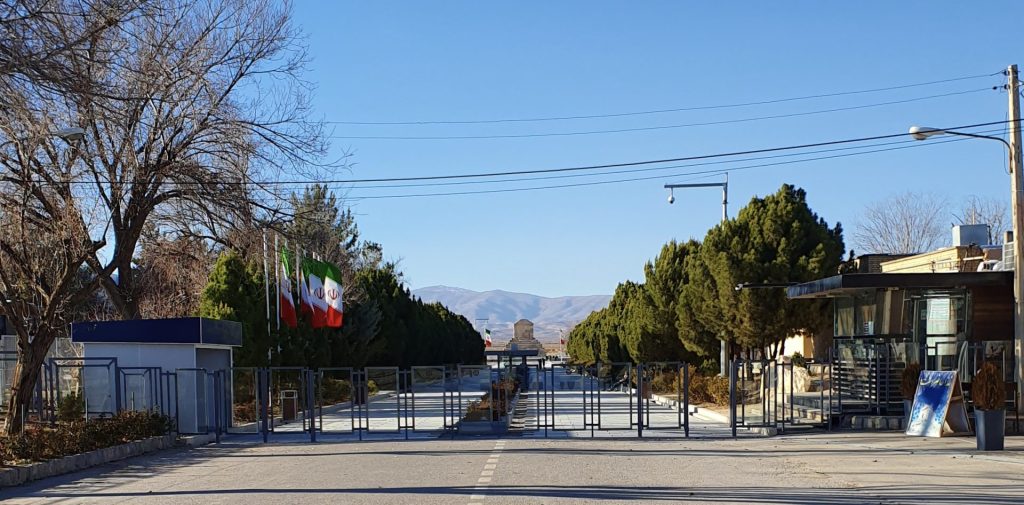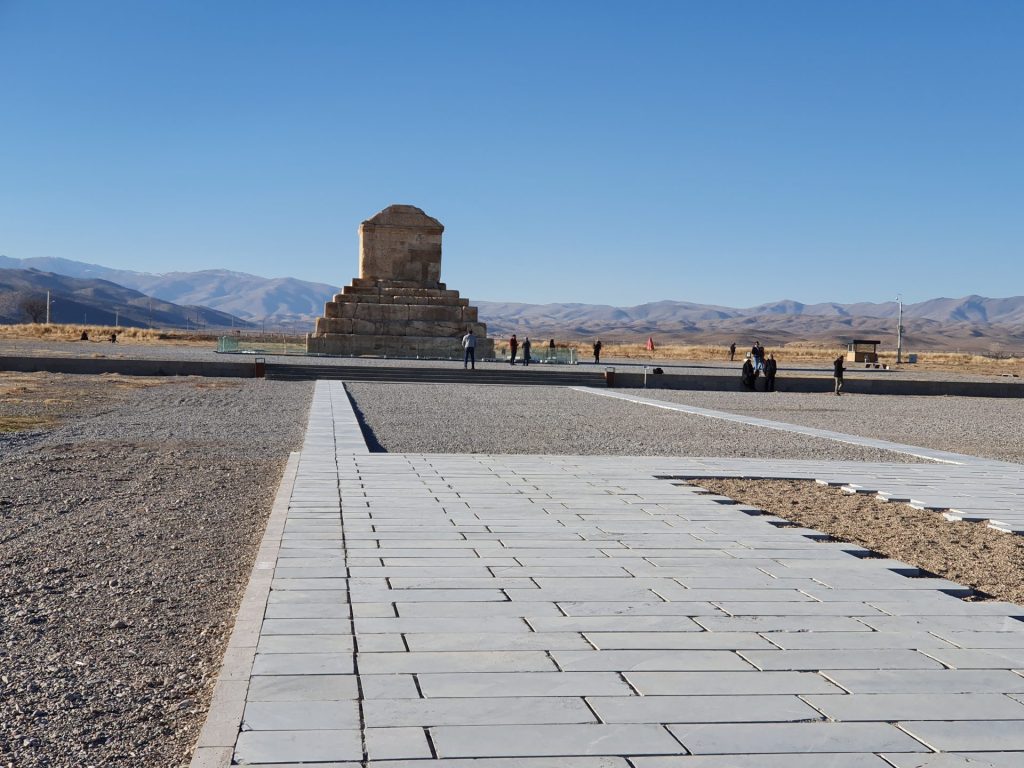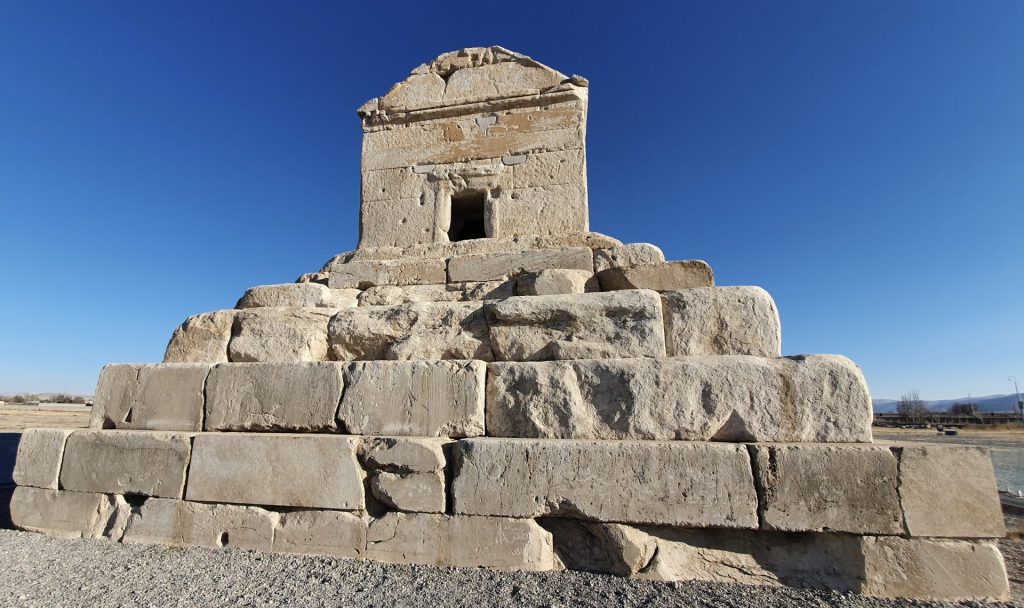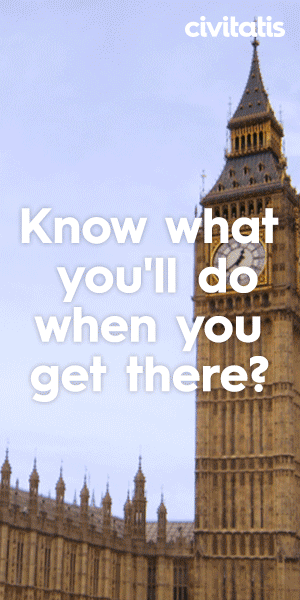Cyrus II of Persia built the worlds first multicultural society in the form of the Achaemenid Empire. Over 2500 years later his tomb still stands. Now a UNESCO world heritage site.
Here’s what you should know before visiting the Tomb of Cyrus The Great. And what you will see if you do decide to visit the Tomb of Cyrus in Pasargadae.
Visiting The Tomb of Cyrus from Isfahan Iran
Cyrus II | Achaemenid Empire
Cyrus II of Persia who was also known as Cyrus The Great and referred to by the Greeks as Cyrus The Elder, was the founder and first ruler of the Achaemenid Empire. He built the worlds first great multicultural civilisation.
Respecting and protecting the religions, customs and practices of the lands he conquered, Cyrus is even referred to as ‘messiah‘ in the Hebrew bible. Cyrus sought the return to Israel of the Israelites. He is responsible for the jewish return to Zion. Cyrus is the only non jewish person referred to as a messiah in the Hebrew bible. And he was Persian.
At its height the Achaemenid Empire stretched from northern India to the Balkans. An area of over 2.1 million square miles.
Cyrus is also credited with building the worlds first postal system which covered the Achaemenid Empire in its entirety.
Pasargadae | The Tomb of Cyrus
The Tomb of Cyrus is located in Pasargade which is in Fars Province Iran. Pasargadae is a UNESCO world heritage site and was the location of the Achaemenid Empire under Cyrus.
Pasargadae is a little over an hour by car from modern day Shiraz. And we had a hire car and driver for the day to combine Pasargadae, Naqsh-e Rostam (Necropolis) and Takhte Jamshid (Persepolis). The Tomb of Cyrus was our last stop for the day as part of the larger circuit from Shiraz.
Getting out of the hired van in Pasargadae we were met by an angry camel. The camel reacted to our van and driver the way a modern taxi driver in Buenos Aires reacts to an Uber. But once we got past the camel and away from the van the Tomb of Cyrus came into view.
Down a short tree lined street we could see the Tomb of Cyrus sitting stoically as it has for millennia.

At the time of his death Pasargadae was the capital of Persia. And the tomb was set amidst a lush garden. Though Pasargadae and the garden surrounding the tomb are long since gone the tomb still stands.
We couldn’t see any evidence that a capital city or a garden ever existed on the site. There was only the tomb. Itself an indication of the reverence with which Cyrus is held.
Over 2500 years after the death of any modern leader and the destruction of their capital, their tomb wouldn’t still stand. But the Tomb of Cyrus still stands. His capital city might be gone. Wiped from the face of the earth. But his tomb still stands.
The Tomb of Cyrus is still standing and facing the mountains as it has for millennia.

When we got closer to the tomb we could see indications of wear. And chisel marks. The tomb was originally covered in a white marble like stone. And pieces of it are still visible on the sides of the tomb.
From the plaques we read at the site we learned that the tomb remained relatively unmolested until 336BC when Alexanders forces raided the site. And then in the 13th or 14th century the outer layer of the tomb was chiseled off during the reign of Shoja and repurposed.

The one other structure standing near to the tomb was built from the remnants of Cyrus’s palace. And it’s construction dates to the 13th or 14th century under Shoja.


Conclusion
It really is quite amazing to think that after more than 2500 years the tomb of a man who conquered and then unified nations, protecting religious freedoms and enshrining early versions of human rights still stands.
Everything else at the site has been long since destroyed and yet, the Tomb of Cyrus still stands facing the mountains as it has for over 2500 years. For almost 1 million sunrises and sunsets everything around it has been built up and then destroyed over and over again. Yet the Tomb of Cyrus still stands.
If I were ever to visit Iran again I would most likely visit Pasargadae and spend longer at the site.
Liked this article? Subscribe to the blog below and check out our other travel articles on Iran.
Bonus Pictures of Pasargadae and the Tomb of Cyrus آرامگاه کوروش بزرگ



















